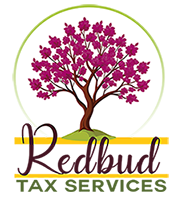Last month’s blog post discussed tax savings related to Traditional, Roth, 401k, and Health Savings Accounts. This post will focus on retirement accounts particularly advantageous for the self-employed small business owners. Without the safety net of employer contributions or pensions, it’s up to you to take control of your retirement planning. Beyond building a nest egg, contributing to retirement accounts can substantially reduce your taxable income, allowing you to reinvest those savings into your business or other financial goals.
Top Retirement Account Options for Self-Employed Individuals
Here’s a snapshot of commonly used retirement savings options for self-employed business owners, along with their tax advantages:
1. SEP IRA (Simplified Employee Pension IRA)
- Who It’s For: Sole proprietors, freelancers, and small business owners with or without employees.
- Contribution Limits: Up to 25% of each employees’ compensation or the annual limit ($69,000 for 2024).
- Tax Benefits: Contributions are tax-deductible for the employer, reducing taxable income.
- Considerations: Employers are required to make contributions in a set amount or percentage for each eligible employee. Contributions aren’t required every year, making it ideal if your income fluctuates. SEP accounts can be established and funded as late as the due date for the employer’s tax return, including extensions. As an added tax savings, there are startup tax credits available for employers.
2. SIMPLE IRA (Savings Incentive Match Plan for Employees)
- Who It’s For: Small business owners with up to 100 employees.
- Contribution Limits: Employees can contribute up to $16,000 (or $19,500 if age 50+) for 2024. Employers must make either matching contributions (up to 3% of the employee’s compensation) or non-elective contributions.
- Tax Benefits: Employees can exclude SIMPLE IRA contributions from their gross income and employer contributions are not subject to FICA and FUTA taxes. Employer contributions are tax-deductible for the employer.
- Considerations: Employers can choose employee matching contributions up to 3% or non-elective contributions of 2%. Employers must make contributions by the due date of the company’s return, including extensions. As an added tax savings, there are startup tax credits available for employers.
3. Solo 401(k)

- Who It’s For: Business owners with no employees (except a spouse).
- Contribution Limits: Up to $23,000 as an employee (or $30,000 if age 50+), plus up to 25% of your net earnings as the employer, with a total cap of $69,000 (not counting catch-up contributions for age 50+).
- Tax Benefits: Contributions are tax-deductible for the business, and you can choose a Roth option for tax-free withdrawals in retirement.
- Considerations: To calculate contribution limits, net earnings for the self-employed individuals also requires deducting one-half of your self-employment tax and contributions for yourself. High contribution limits make it a powerful tool for maximizing savings.
Business owners make many decisions on a day-to-day basis and saving for retirement can feel low on the priority list. But with a little bit of planning and advice from experts, these decisions can benefit business owners now and for years to come.


